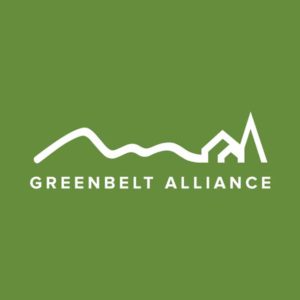By Edward Shturman
My name is Edward and I am a 7th grader at Ronald C. Wornick Jewish Day School in Foster City, California.
Here at Wornick, in 7th grade, we do a project called the Tzedakah Project. Tzedakah means obligatory giving. Everyone in the grade chooses a nonprofit organization to raise money for, and at the end of the year, we give that money to each of the organizations. The goals of this project are to learn how to raise money, allocate the money, and support an organization whose values and the social issues they support match how we feel about those values.
I chose Greenbelt Alliance because I believe that supporting the environment is a really important factor in the value of Tikkun Olam, which means repairing the world. Also, Greenbelt Alliance’s values align with mine on a personal level. I feel that nature should not be sacrificed for any purposes that are not mutually beneficial to the environment. So for example, eating from fruit trees is okay but cutting them down is not.
As part of this project, I interviewed Matt Vander Sluis, program director at Greenbelt Alliance, and learned a lot about the organization. Here are some highlights from our conversation:
Edward: How closely does Greenbelt Alliance relate to environmental degradation?
Matt: That’s core to the work that we do. Because we’re focused on how we grow in the Bay Area, our work connects to many environmental issues. We save habitats for rare and endangered species. We protect the water supply as well. Our work also helps protect air quality and reduces greenhouse gas emissions.
E: How do these values that Greenbelt Alliance has get supported by your programs?
M: Through our programs, we protect the natural and agricultural lands of the Bay Area and ensure that the Bay Area grows smartly. We also have an outings program, which helps people get out into nature and see how and why our work is so important. We’ll often go to places where we’re currently working on protecting the land or a place we’ve already protected.
E: How can a school like Wornick be involved?
M: The first step is to be more informed. So reading our newsletter (subscribe here!) and hear what we work on would be enlightening if you want to know how we protect the Bay Area. There are also times when people can volunteer to support our workshops and other events.
E: What is Greenbelt Alliance’s mission?
M: Our mission is to protect the Bay Area’s greenbelt and ensure our cities and towns grow in ways that create great neighborhoods for everyone in the Bay Area. We shape the rules about how our communities grow so that we’re protecting the Bay Area’s natural and agricultural lands and we’re encouraging the right sort of growth so that our communities are more affordable, sustainable, and vibrant.
E: What are the benefits of working at Greenbelt Alliance?
M: I get to know that at the end of the day, I’ve helped make my home a better place—for me, my wife, my parents, my friends—and I get to work with amazing people who are passionate and dedicated to making the Bay Area a better place to live.
E: What does the term “sprawl” mean?
M: We refer to “sprawl” as development that’s happening in the wrong place. For example, the development that’s happening on farmland at the edge of town. Or on those rangelands that the cows are grazing on. Or along the watershed lands where there’s important habitat for wildlife. All of those areas, when development happens there, we call it sprawl because we’re spreading out like a big slime mold. Instead of staying within our existing boundaries, we’re sprawling outward onto those areas.
E: How would you stop sprawl?
M: We use a lot of different tools to stop sprawl. One of the most powerful tools we’ve had in the Bay Area is to let the voters decide where they want development to happen. And we’ve had a lot of success bringing that question to the voters in different cities. If the voters say, “No, we don’t want development in this area,” then we can draw a line in the sand called an “urban growth boundary.” Once these lines are in place, the land outside of the line must remain protected. We’ve helped put those sorts of lines in places in many communities around the region. And now the Bay Area has about 40 cities with urban growth boundaries.
So of course, I was asked questions as well.
Matt: What attracted you to Greenbelt Alliance?
Edward: My social issue is environmental degradation and my personal opinion is that the most important category of environmental degradation is protecting lands to stay the way they are. The green pastures we have in the Bay Area, I think we shouldn’t burn them for industry or sacrifice them for any other purposes. And overall I think that beauty in nature shouldn’t be tampered with. So when I saw Greenbelt Alliance and what they were doing to help the Bay Area, I said to myself, “This is the organization because my values connect to theirs.”
M: How did you find us?
E: I was referred by my teacher because obviously there are so many organizations helping to solve environmental degradation. Our teacher gave us several options to choose from and I researched all of them. Greenbelt Alliance was the one that I thought was right for me.
I learned that I am the first person from Wornick to be affiliated with Greenbelt Alliance, which I think is interesting. Matt told me that other schools do this kind of thing as well, which didn’t really surprise me. In my eyes, advocacy and standing up for what you value and what you think is a problem in our growing world is truly mesmerizing.
Thank you for your support, Edward!





